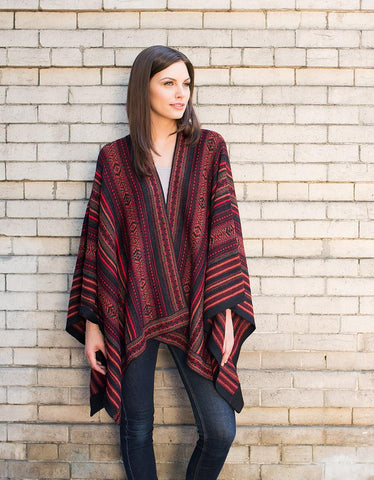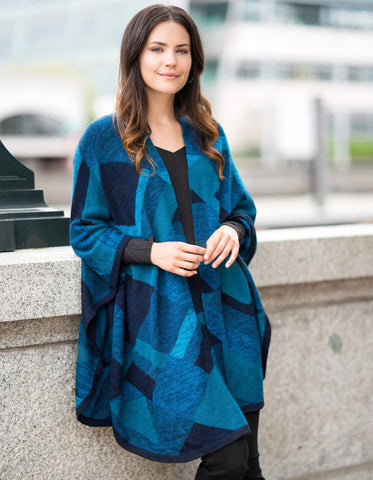No Products in the Cart
They have dozens of names: women’s poncho, serape Mexicano, women’s cloaks, manta, shawl, mantilla, lliqllas, aguayo, gabán, pala, or ruana. They all describe the same family of garments: a folded piece of fabric (or two pieces of fabric joined together) made to be worn over the head or wrapped around the body. It’s one of the oldest forms of alpaca clothing that exists, with stunning examples of poncho fashion spanning millenia and the entire length of South, Central and southern North America.
Long before Peru and Bolivia were exporting alpaca sweaters, their weavers were hard at work making alpaca ponchos. How long ago? In Paracas, on the desert coast of Peru, mummy bundles dating to 300 BC have revealed incredibly elaborate ponchos and wraps, and by that time Paracas culture had been going strong for 500 years. That’s a fashion trend with some staying power! The designs were usually elaborate embroideries on a plain-weave field, depicting animals, birds, flying shamans and warriors holding severed heads. Many were thought to be ceremonial. The Paracas weavings were made of both cotton and alpaca fiber, indicating trading routes that stretched from the highlands to the desert shore. As is often the case in things Invisible World, textiles were at the center of larger exchanges of culture and ideas.
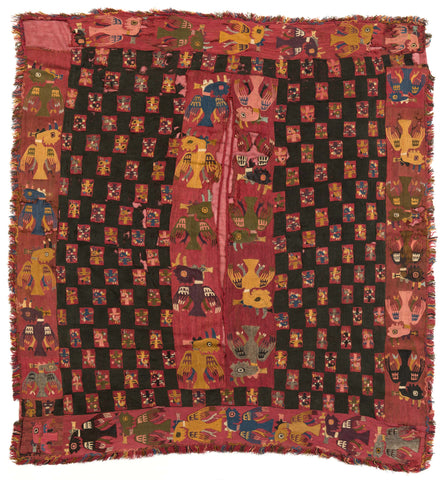
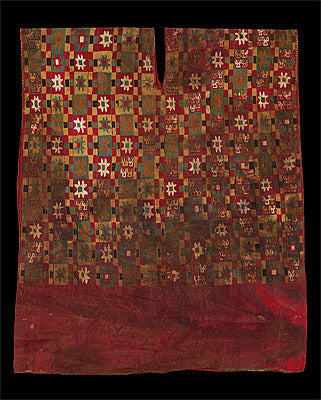
Paracas Poncho, c. 300 BC Inca Poncho c. 1400 AD
A thousand years later the Incas continued this fashion trend with brilliant alpaca wool ponchos decorated with complex geometric designs. These designs indicated the status of the wearer and their role in the Inca bureaucracy, and used the full range of weaving techniques: slit tapestry, embroidery, brocade and even tie-dyeing in the celebration of an orderly society. There were even ponchos made of thousands of feathers.
With the coming of the conquistadors and the destruction of Pre-Columbian South American and Mexican cultures, the Native American poncho changed gears and became both a dignified dress garment for mestizos and a utilitarian but gorgeous piece of outerwear for farmers and shepherds. In Mexico, it became the Serape blanket poncho worn by Mexican peasants (and Clint Eastwood). In Peru and Bolivia, the designs continued to vary from village to village, with the colors and patterns of each wearer’s home village instantly recognizable to others of the region. Unlike today’s fast fashion, designs of these traditional Bolivian and Peruvian ponchos changed very slowly over the centuries. In Andean society, men wore ponchos and women wore squares of fabric that they pinned around their shoulders.
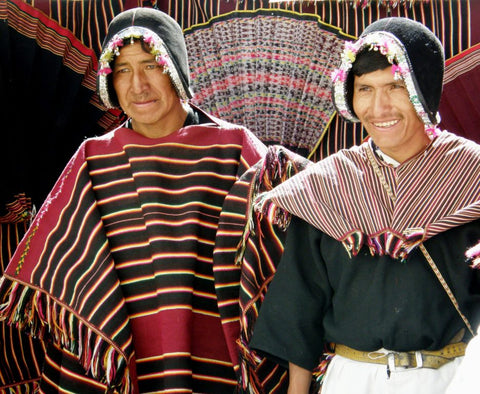
Traditional Alpaca Poncho, Tarabuco Bolivia
What is a Ruana?
The lesser known ruana wrap began in Columbia, where the front of the garment was left open so that the poncho moved more freely and could be used either as a coat or wrapped across the shoulders like a shawl. This made them even more suitable for use as a winter cloak, or even a delicate lightweight type of shawl poncho. In Colombia, ruanas were worn by both men and women.
With time, woven ponchos developed into knitted ponchos, and became a fashion item reaching far beyond South America and Mexico. At Invisible World, some of our knitted ponchos and ruanas still echo their pre-Columbian origins, while others refer to textile traditions of Africa or creative geometrics. You’ll have to choose which is the best poncho for you. Whatever your decision, you can be confident that this is one garment that will not be going out of fashion anytime soon.
